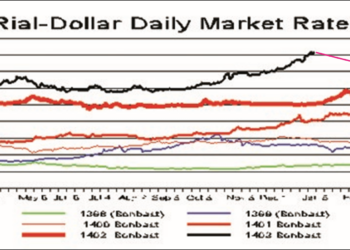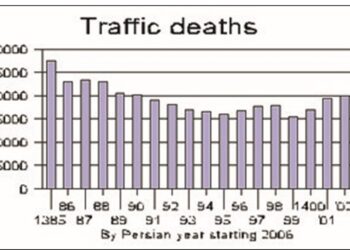April 15, 2016
The Islamic Republic is hoping the end of sanctions means it can rapidly ramp up its production of the many minerals scattered underground all across Iran.
According to mining sources, including the US and British Geological Surveys, Iran is among the top 15 mineral-rich countries, with over 700 billion tons of potential reserves—about 7 percent of the world’s total—worth more than $700 billion.
Yet less than a tenth of the country has been surveyed, so a true count of Iran’s mineral riches does not exist.
What is known is that Iran’s soil contains at least 68 types of minerals, the most important of which are zinc, iron ore, coal, copper, lead, bauxite (aluminum) and uranium.
There are an estimated 3,000 mines, about 90 percent state-owned.
Iran is the fourth-biggest supplier of iron ore to China and has the world’s ninth largest reserves of copper at 32.5 million tons. The country is also a major Middle Eastern steel producer.
Yet, despite its metal riches, mining has up to now contributed less than one percent to Iran’s gross domestic product. One of the biggest barriers is technology. Deprived of foreign investment due to sanctions, Iran has not been able to attract specialists in mineral extraction and processing, nor update its equipment. A lot of mining machinery in Iran is decades-old. Limited railway capacity, low volumes at mining facilities, and high interest rates are further brakes on development.
However with the end of sanctions, foreign firms are lining up to talk to Iran about possible investments. In September, executives of Kobe Steel Ltd, Japan’s fourth-largest steel-maker, and state-run Japan, Oil, Gas and Metals National Corp (JOGMEC) met officials in Tehran to discuss mining prospects.
That meeting was part of a goal of attracting $29 billion in foreign investment to the sector.
Deputy Trade Minister Mehdi Karbasian last week said Iran now has pledges—but not contracts—for almost $11 billion in investment in mining. Some $6.3 billion is from Italy’s Danieli, which has long worked in Iran’s steel industry. Another $4.4 billion will come from China. And an unidentified sum is anticipated from Fives, the French aluminum company. But how much of that is investment and how much is Iranian payments to those companies has been left unclear.
The lifting of sanctions could not have come at a worse time for Iran’s miners, however, as prices for most of the commodities hiding under Iranian soil are at multi-year lows. It is not just oil prices that are depressed. Commodities in general are in a slump.
Iron ore prices, in particular, have killed off a significant amount of export tonnage, especially since so much Iranian ore goes to China, whose growth has slowed. Reuters reported in September that Iran’s iron ore exports fell by almost half during the first eight months of 2015. To compete in the global iron ore market, Iran must be cost-competitive with the two largest and lowest-cost iron producers—Brazil and Australia.
On a volume basis, Iran has a long way to go. According to the International Steel Statistics Bureau, Iran exported 22 million tons of iron ore in 2014, compared to top shipper Australia at 754 million tons.
But does Iran really want or need to compete? According to the Iron Ore Producers and Exporters Association of Iran (IROPEX), Iran’s iron ore shipments will likely drop from 15-16 million tons in 2015 to less than 10 million tons by 2017, as Iran seeks to lift domestic steel output from 16 million tons in 2015 to 25 million tons in 2025. To reach that goal, Iran would need to bump up its iron ore production from 45 million tons in 2014 to 159 million tons. With those ambitious goals, there may not be enough excess iron ore to export.
But there are still all those other minerals buried under Iran. However, few analysts expect a bull market for metals any time soon, given that the China-driven boom appears to be over.
But the mere fact that Iran is now open for business is piquing the interest of foreign mining companies. Al-Monitor points out that efforts are being made to cut red tape by streamlining the permitting process into a “single window system” whereby potential investors do not have to go through different government bodies to obtain licenses.
The 2002 Foreign Investment Promotion and Investment Act gives foreigners ownership rights and the opportunity to transfer profits out of the country in foreign currencies.














